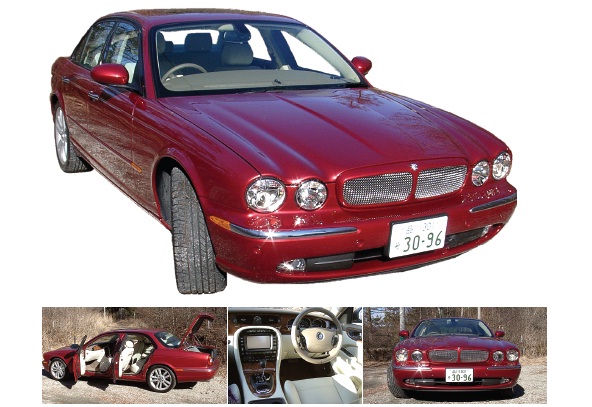Keith Robson falls in love with something both coldly mechanical and breathtakingly beautiful — the Jaguar XJR
THE PROBLEM with pootling about in cars all the time is the eternal conflict of sensations and emotions you are confronted with when driving different models. When you have a decent gap between radically different models, it’s less of a problem; when you jump out of Nissan’s bum-twirling 350Z and into a Jaguar saloon, it can be completely disorientating, even for a chap like me who loves big cars.
The difference is soon brought home. In fact, it was brought home as soon as I tried to stop the Jaguar XJR I was testing and was hit by a sudden dose of brakelag. Remember, I tried to tell myself, if it looks big, has a 4.2-liter engine, weighs not a lot less than two tons and is roomier than your bedroom, stopping might prove to be a problem. In reality, it was less about the car and more about me. The XJR is a performance saloon that is designed to go fast and stop fast. Perhaps it does need to stop a little faster; it certainly doesn’t need to go any faster. The XJR is powered by a 4.2-liter supercharged brute of an engine that can reach 100kph in well under six seconds. In fact, across the gears, power is never a problem and if you want a bit more bite, you can use Jaguar’s semi-automatic shift. In reality, there’s no need. The automatic gearbox is very sharp and the kickdown thrust positively aeronautic.
But getting back to changing cars, you can chuck the 350Z around any lump- free road surface and expect to stick to it with considerable adhesion. Jump into your Jag and you feel you’re steering a bit of a boat. Again, it’s a bit of an illusion. You tend to drive a limousine like a limousine; XJs just aren’t meant to be thrown around the back roads of Karuizawa. But if you do start to feel a little sporty, the Jag is reasonably game. You’re not going to get it on two wheels or throw the back end out, but you will surprise an awful lot of people with just how slickly you can go up and down those hills and through those bends.
It will be a bit of a double-whammy for the little folk: humiliated by speed and belittled by looks. The Jaguar XJ series turns everybody’s head. For 37 years, it has been the most elegant saloon on the road. It has reinvented itself and refined its looks until you start to think it just can’t get any lovelier. While its German rivals battle it out in the chunkier-than-thou stakes (not to mention the numbers game — 760Li, S600L, etc.), the designers at Jaguar don’t really have to do a thing. There’s not a hint of chunkiness in the XJ range; the cars sit as if on a scale, perfectly balanced, a study in symmetry. As if to prove the point, there’s a line that runs along the side of the car through the door handles from front to back. It’s dead straight. How can something so mechanical be so beautiful? Inside, the classically simple lines are repeated, even down to the voluptuous leather seats. With a navigation system, the dash is a little busier than before, but nothing detracts from the interior’s feel of ease and comfort (unless your teenage kid is playing Motorhead on the DVD system installed in the rear). Could anything be more perfect?
Well it could if the electrical system worked properly. Jaguar has spent years shaking off a reputation of breakdowns and using cheap parts, so it was somewhat disappointing to have the warning lights and indicators go completely haywire up in the mountains of Nagano. The fault was a shoddy hazard-light switch and a problem like that is not going to inspire confidence in a car. And for ¥13 million, you would expect better. That said, everything else worked fine.
If you want cold efficiency, you go Germanic, but if you want monstrous performance combined with the best looks around, the XJ should easily turn your head, too.
| THINGS YOU NEED TO KNOW 390 BHP at 6,100 RPM 0 to 60 mph in 5.2 seconds Top speed of 155 mph Costs ¥12,950,000 www.jaguar.com www.jaguar.co.jp Tel. 0120-050-689 |








